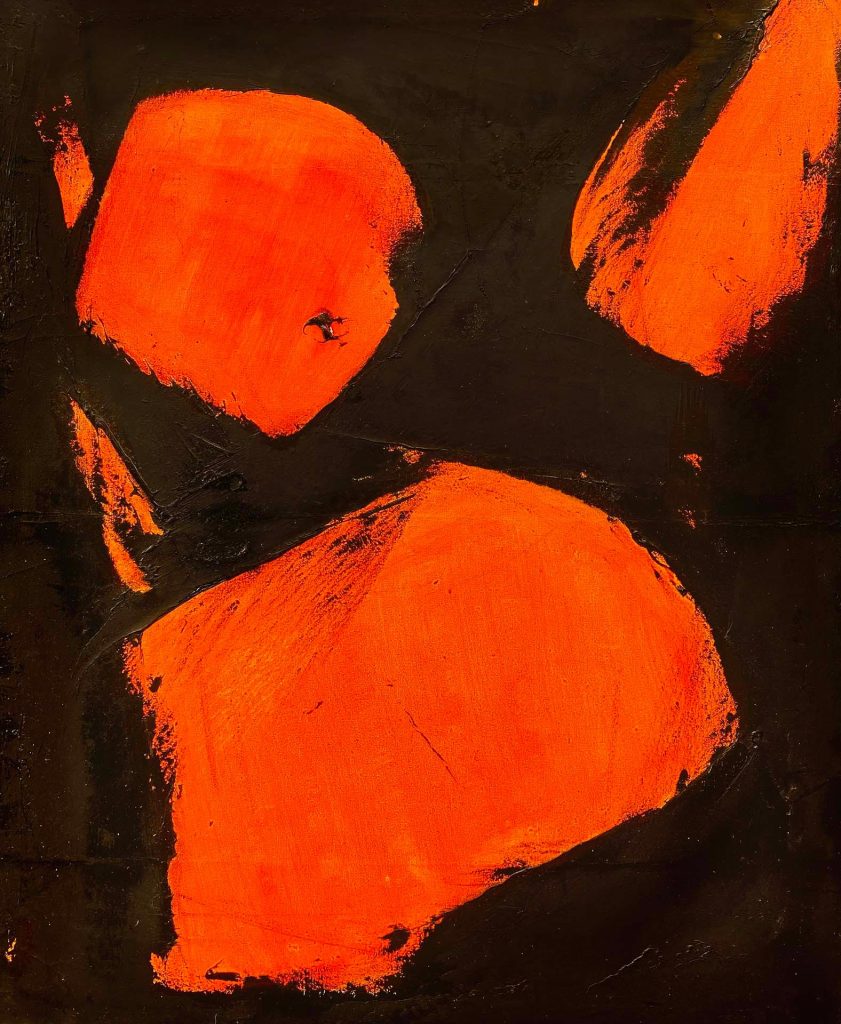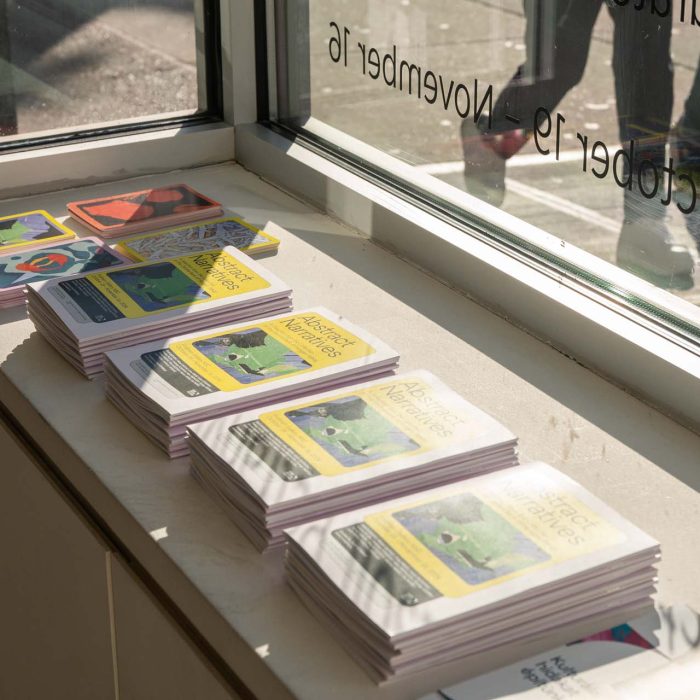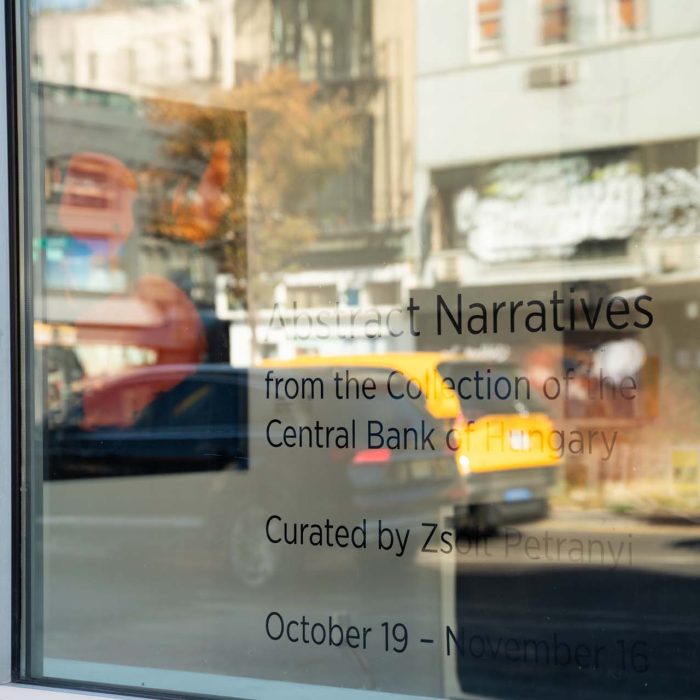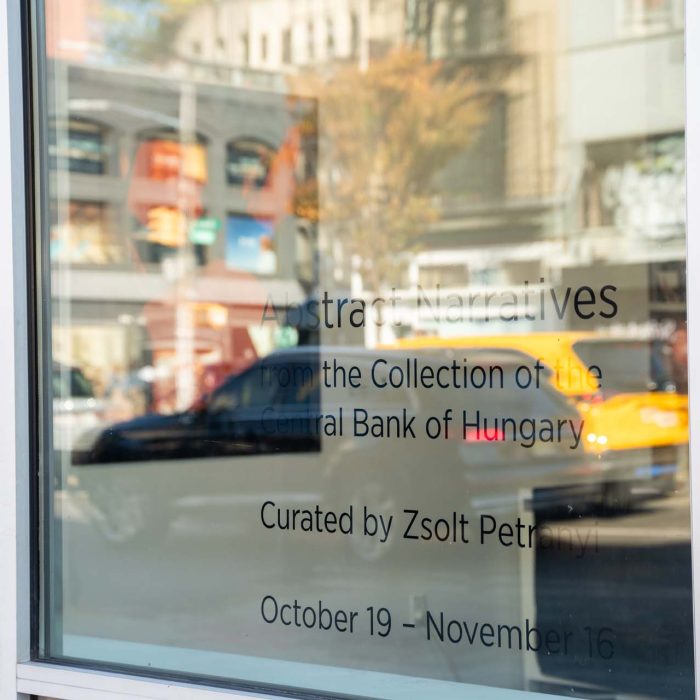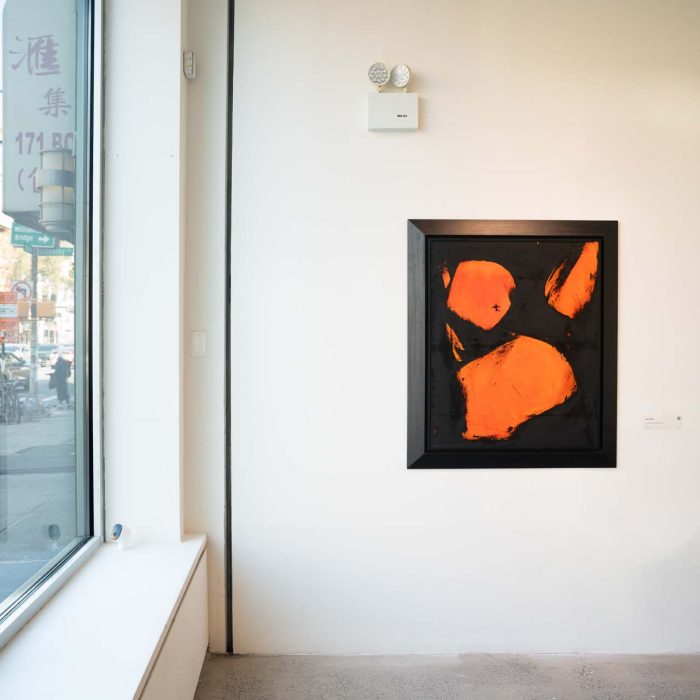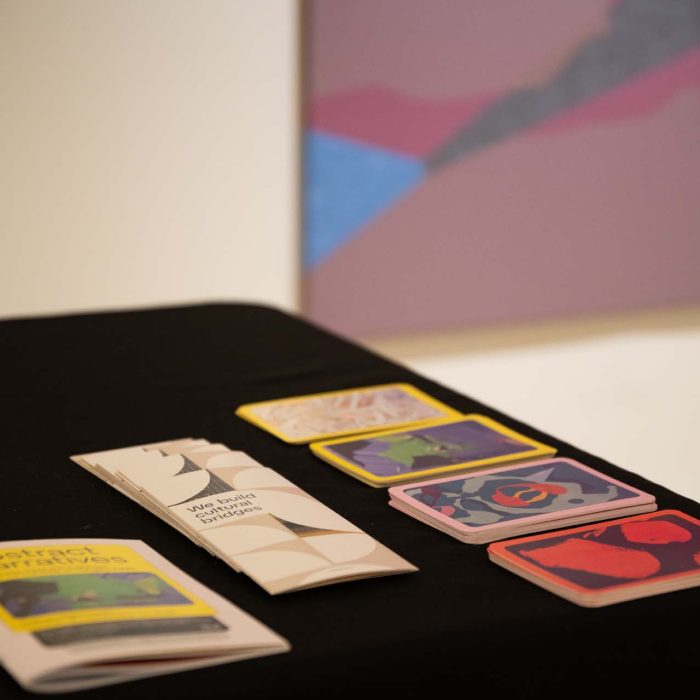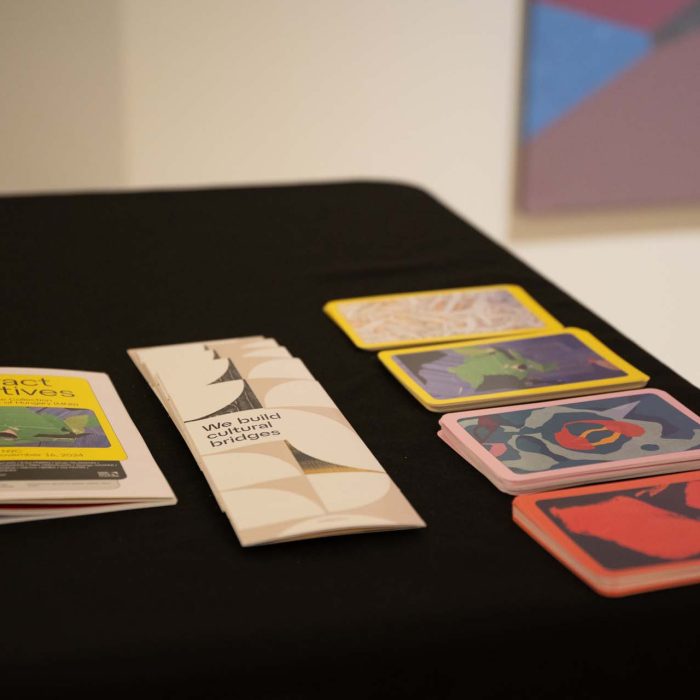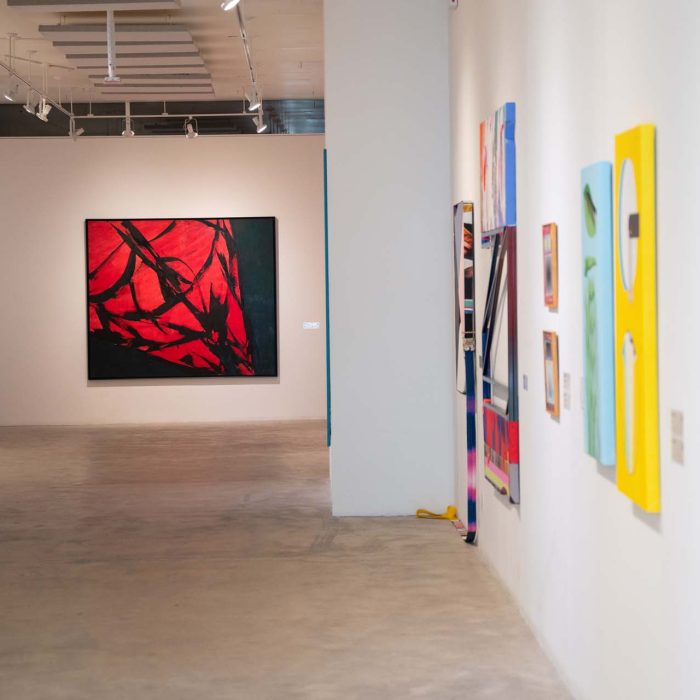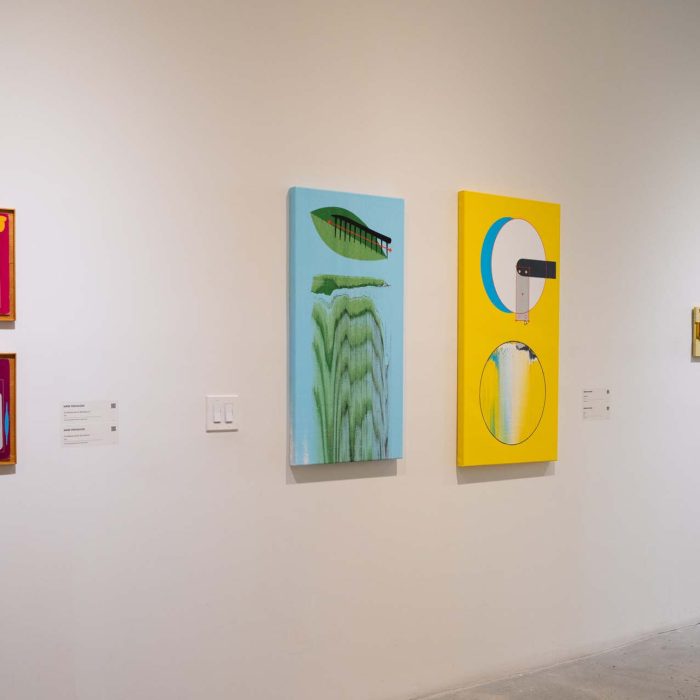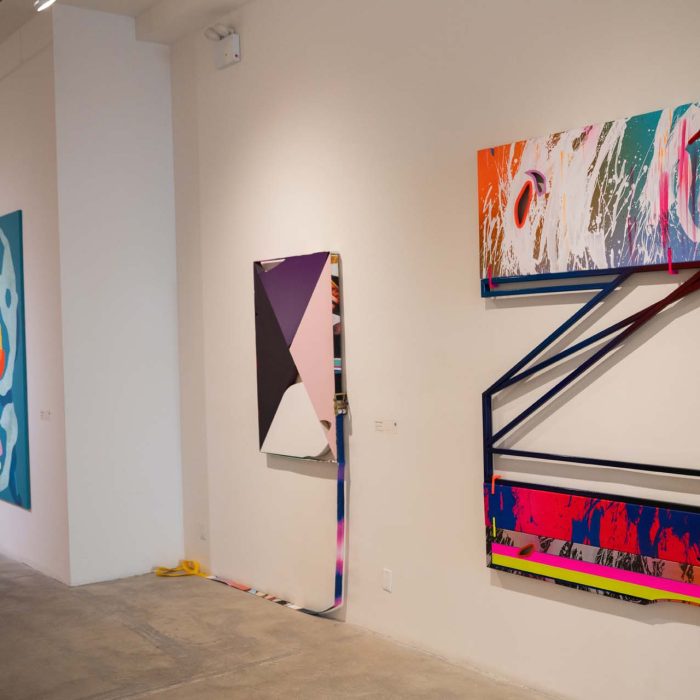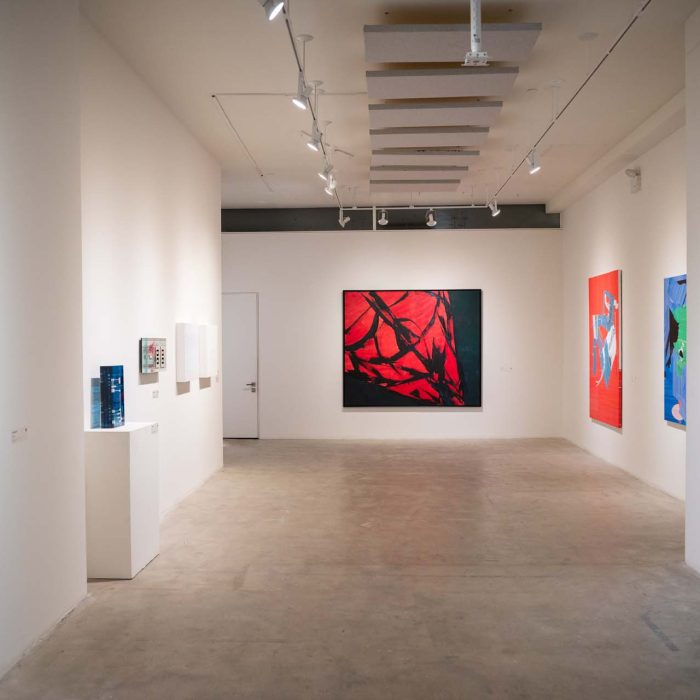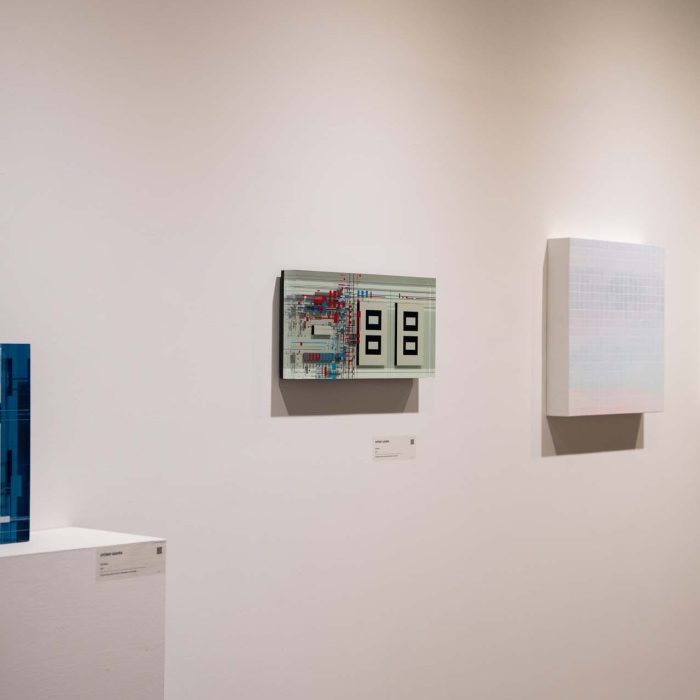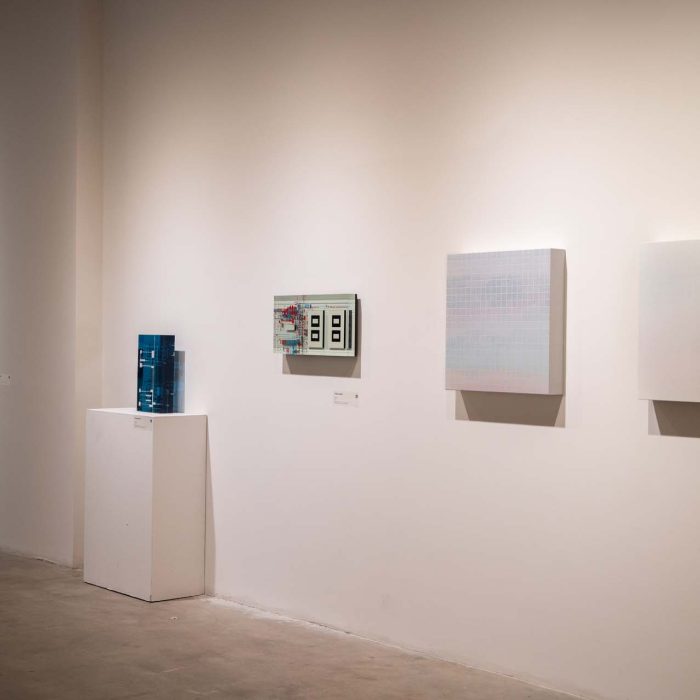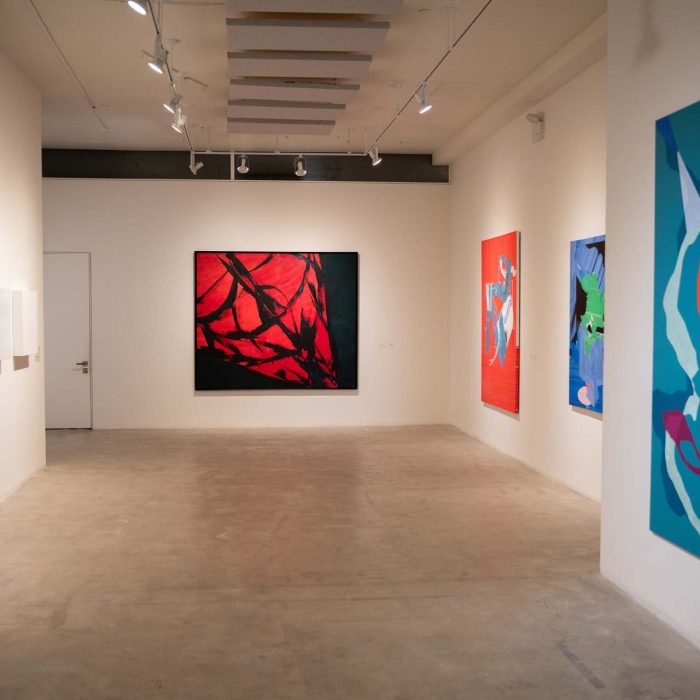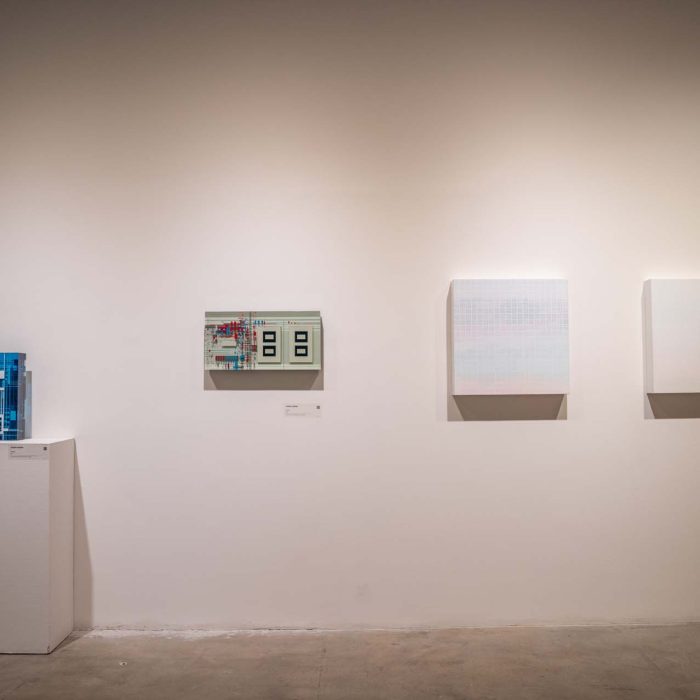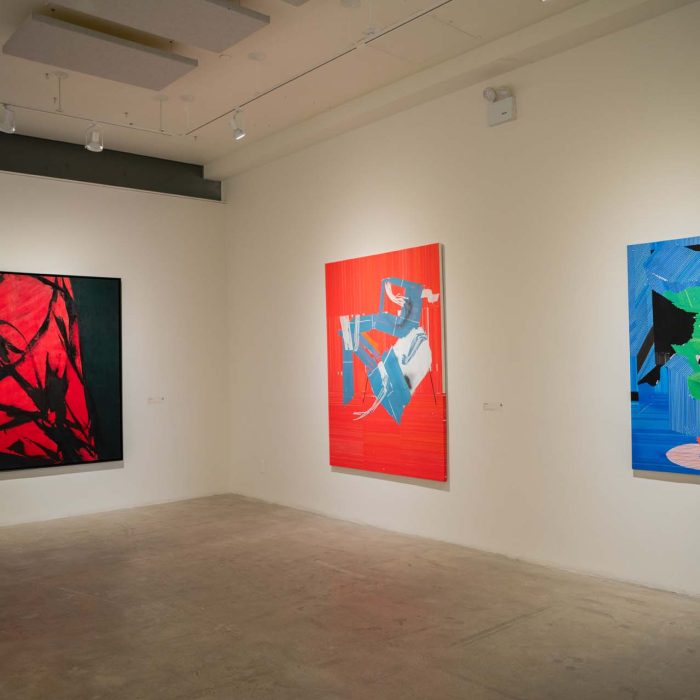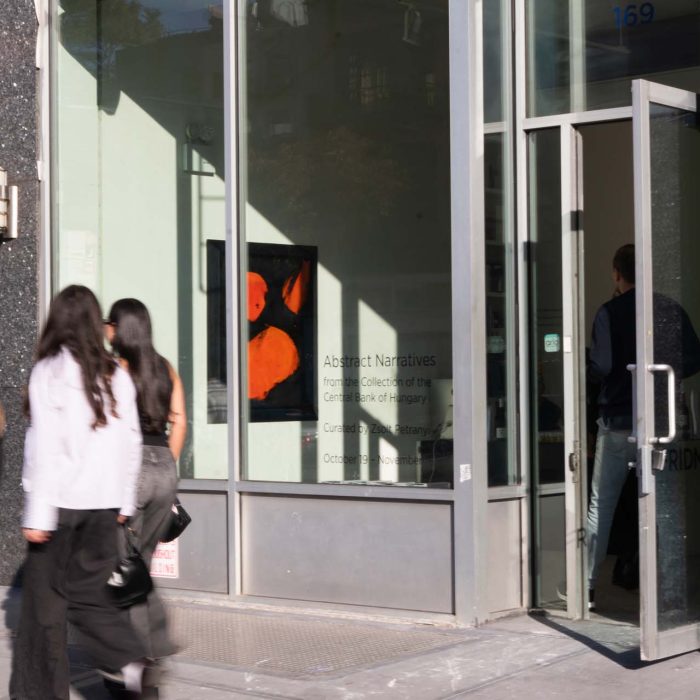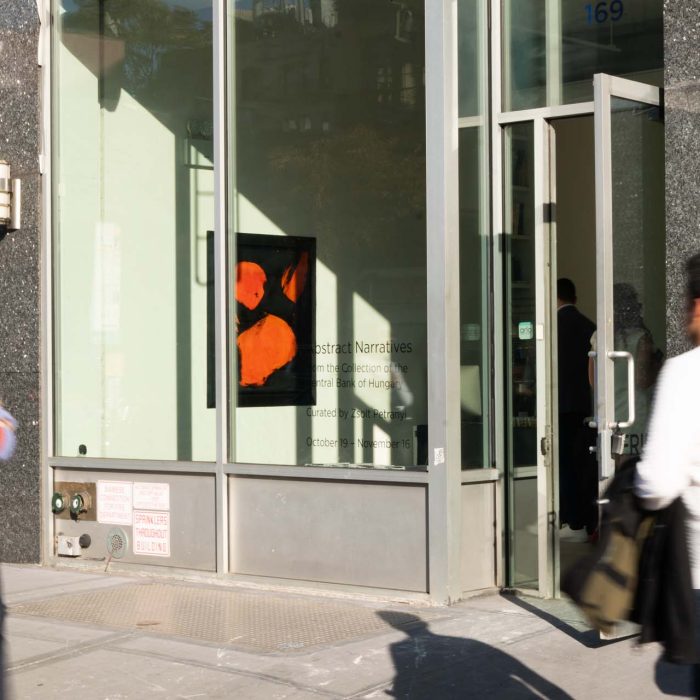Selected Works from the Collection of the Central Bank of Hungary (MNB)
The Central Bank of Hungary is honoured to present an exhibition of selected works from its contemporary art collection at the Fridman Gallery in New York The show takes a unique approach to presenting artists from different generations. The title “Abstract Narratives” indicates a methodological approach that focuses on the artists’ choice of technique and concept takes centre stage.
Among the artistic trends of the twentieth century, abstraction is stands out for its ability to constantly reinvent itself. It has been enriched by various inspirations, from ecology to design, from science to psychology; its transformations follow changes in our living conditions and in our world view. Moreover, the meaning we ultimately ascribe to a work of abstract art is also influenced by the personal and professional journey of the artist, by the local context, and the technique chosen by the artist. The title of the exhibition alludes to its central theme: the search for narratives.
Abstraction emerged at the beginning of the twentieth century as a movement that reinvented painting and sculpture, breaking with the traditions of representation. Expressing the technological and social changes of the time, ushering in the new era of modernism, it immediately acquired local connotations. In abstraction, the particular movenments always had and still roots in home-grown art discourses and positions. Even if the works themselves have a cross-cultural understanding, their creative processes often differ by geographical region. Abstract Narratives focuses on historical questions concerning regional art.
While accepting that art has historical connotations, the Hungarian curator and theoretician László Beke (1944-2022), in his text entitled From Creative Interpretation to the Denial of Interpretation (1975), stressed the importance of the viewer’s personal contribution to resolving the meaning of a work of art. I believe that the personal and psychological condition is not only a characteristic of the viewer, but also of the artist. The historical discourses surrounding the artist at the time of creation make a significant contribution to the outcome: the artists’ responses differ, inextricably linked to their geographical location.
The development of Hungarian abstraction was influenced by artists with international experience: many, such as László Moholy-Nagy and György Kepes, emigrated before or after the Second World War. Moholy-Nagy played an important role in the Bauhaus movement, while Kepes, who followed the former to Chicago, worked in the New Bauhaus. Their openness to photography and new audio-visual techniques had a strong influence on the emergence of media art. The second important aspect was the local position of abstraction: in the 1920s Lajos Kassák, artist and editor of avant-garde journals, supported the Russian avant-garde and its abstract architectural approach. After the communist takeover in 1948, when abstraction was branded as an imperialist, bourgeois and anti-working-class style, the influence of Kassák remained alive. In this context, abstraction was not merely a counterpoint to the figuration of social realism, but also a symbol of political resistance and freedom of expression. In the 1960s Hungary, the presence of abstraction evoke a cultural-artistic dialogue that was specific to the country. While the non-figurative forms followed international stylistic trends such as gesture or color field painting, abstraction was also in search of its social, architectural and design role in the local visual culture. The autonomy of this style was rarely accepted even among highly educated intellectuals. However, rooted in Kassák’s interest in Constructivism and the pure compositions of Moholy-Nagy, the abstract movement was associated with pure forms, clear colors, hard edges and surfaces with invisible brushstrokes.
The eighties and the fall of the Iron Curtain opened the door to new experiments. Although, the “revival” of the genre did not come until the early years of the new millennium, when artists developed new ideas, methods and approaches to the style. Their interest was centered on progress in the media, the Internet, digital image editing, graphic computer programs and ideas related to globalism. While, in their understanding, the sources of art were democratic andaccessible for all, art still relied, returning to the ideas of László Beke, on personal interpretation.
Regarding Eastern-European art, it is important to recognize that the generations that lived through the Second World War, the communist regime, the unexpected end of the division of the world into two competing ideologies and then the new, wild capitalism of the nineties, react differently to new global trends and styles than the younger generations. Artists who are active today would like to express themselves on a new platform, where technical and formal innovations play an important role and can be easily compared and distributed through public media. But deep within their forms and ways of expression, as everywhere in the world, lie personal narratives, the key to understanding why they choose certain concepts and methods. At the end of his article, László Beke suggests that we should abadon or deny interpretation altogether since the viewer’s understanding of a particular artwork is entirely unpredictable. Abstract Narratives intends to break down the rigid bounderies of judgement and accept the fact that abstraction is a global language expressing creativity in borderless frames through personal approaches that have historical, theoretical, and, sometimes, ideological backgrounds.
Exhibited artists:
Andreas FOGARASI, Anthony VASQUEZ, Zsófi BARABÁS, Róbert BATYKÓ, Erika FÁBIÁN, István FELSMANN, Ferenc FICZEK, Márk FRIDVALSZKI, György GÁSPÁR, Simon HANTAI, Rita KOSZORÚS, Márton NEMES, Dia PINTÉR, Judit REIGL
Curator:
Zsolt PETRÁNYI, Head of Department of Contemporary Arts, Hungarian National Gallery, Budapest
Exhibition on view:
October 19 – November 16, 2024
Venue:
Fridman Gallery (169 Bowery, Storefront, New York, NY 10002)
Opening hours:
Tuesday – Saturday, 11am-6pm
↖ Judit REIGL: The Experience of Weightlessness, 1966

